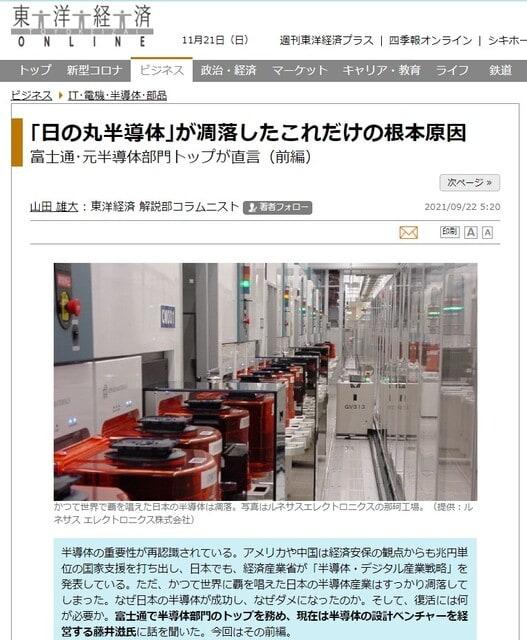Root Causes of the Decline of "Hinomaru Semiconductor": Frankly Statements from Fujitsu's Former Semiconductor Division Leader (Part 1)
――Why was Japan able to win in the early days of the semiconductor industry in the first place?
The United States invented semiconductors in the late 1940s. In the 1980s, Japan beat the United States in semiconductor manufacturing. That's because Japan created new technology in the 1970s.
For example, he created the concept of a clean room. In the United States, he entered the manufacturing site with shoes on, but in Japan, he created a clean room because defects would occur unless it was made in a clean environment. The basic patent for semiconductors may have originated in the United States, but Japan also developed LSIs (Large Scale Integrated Circuits). Our seniors did it while working hard from scratch.
Priority to "cheapness" as the PC market becomes the center of the market
There is one more important thing. There was a market. At that time, all major Japanese electronics companies were making telecommunications equipment and computers in the NTT family. The company's communication equipment and computer divisions were major customers for semiconductors. We need strong semiconductors to strengthen our own hardware. For the communication equipment division and the computer division, there was an advantage in having their own semiconductor division.

 notebook-laptop
notebook-laptop






